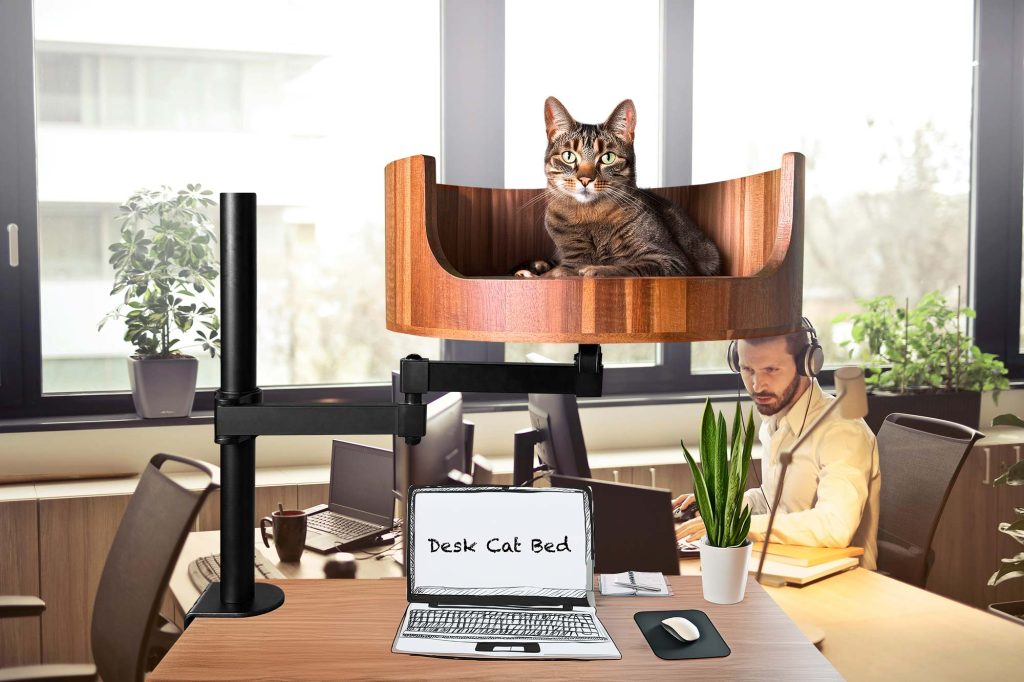Cats are known for their mysterious and sometimes confusing body language. While many people are familiar with a dog’s wagging tail as a sign of happiness, few may realize that cats also have the ability to wag their tails. The Desk Cat Nest team has delved into the complex world of feline body language in order to help cat owners better understand their pets.
In this article, we will explore the various meanings behind a cat wagging its tail, as well as other important body language cues that cats use to communicate with their humans. From the position of their ears to the movement of their whiskers, cats have a wide range of signals that they use to convey their emotions and intentions. By decoding these signals, cat owners can better respond to their pets’ needs and strengthen their bond with them. This article will provide valuable insights into the fascinating world of feline body language, shedding light on what our beloved cats are trying to tell us with their tails and beyond.
1. Cats wag their tails as a form of communication, with different movements indicating various emotions and intentions.
2. Understanding feline body language can help cat owners better interpret their pet’s feelings and needs.
3. A cat’s tail position, speed of wagging, and overall body language can provide valuable insights into their mood and behavior.
4. Tail wagging may signal excitement, fear, aggression, or contentment, depending on the context and other accompanying cues.
5. By paying attention to their cat’s tail movements and body language, owners can improve their bond with their feline companion and respond appropriately to their needs.
Cat Tail Wagging: What It Means
Cats wagging their tails is not the same as dogs wagging their tails. While a dog wagging its tail usually indicates happiness or friendliness, a cat’s tail movement can convey a range of emotions and can be quite complex. For example, a cat with a tail held high and vibrating slightly is likely feeling happy and confident. On the other hand, a cat with a twitching tail might be irritated or agitated. It is essential to pay attention to other body language cues and the context to understand what your cat’s tail wagging means.
Tail Positioning and Posture
The position of a cat’s tail can provide valuable insights into their mood and intentions. A cat with a tail held upright is feeling confident and possibly in a playful mood, while a cat with a tail tucked between its legs is likely scared or anxious. Observing a cat’s overall posture, along with their tail positioning, can help you better understand their emotions and react accordingly. For example, a cat with an arched back and a puffed-up tail may be feeling threatened and defensive.
Case Study: Cat Tail Signals
A recent study conducted on feline behavior revealed fascinating insights into the meaning behind various tail movements in cats. The researchers observed a group of cats in a shelter setting and documented their tail wagging patterns in different situations. They found that slow, gentle tail movements accompanied by purring indicated contentment and relaxation, while rapid, aggressive tail flicking was a sign of irritation or aggression. By tracking these tail signals, the researchers were able to predict the cats’ behavior more accurately and provide better care for them.
Understanding Your Cat’s Tail Language
As a cat owner, it is essential to familiarize yourself with your cat’s unique tail language. Spend time observing how your cat moves its tail in different situations and pay attention to the accompanying body language cues. By building a strong bond with your cat and understanding their tail signals, you can communicate better with them and meet their needs effectively. Remember that each cat is individual, so what might apply to one cat’s tail language may not necessarily apply to another.
Desk Cat Nest FAQ
What is cats wag tail?
Cats wagging their tails can be a sign of different emotions, such as excitement, frustration, or fear. It’s important to understand your cat’s body language to interpret the tail wags correctly.
How can the Desk Cat Nest help with cats wag tail?
The Desk Cat Nest provides a cozy and safe space for your cat to relax and destress, which can help reduce instances of excessive tail wagging due to anxiety or nervousness.
Is the Desk Cat Nest suitable for all cat breeds?
Yes, the Desk Cat Nest is designed to accommodate cats of all sizes and breeds. The spacious and comfortable design makes it a perfect lounging spot for any feline friend.
How do I introduce my cat to the Desk Cat Nest?
Place the Desk Cat Nest in a quiet and comfortable area where your cat likes to spend time. You can encourage your cat to explore the nest by placing treats or toys inside to pique their interest.
Can the Desk Cat Nest help with other behavioral issues?
While the Desk Cat Nest is primarily designed to provide comfort and relaxation for your cat, it can indirectly help with various behavioral issues by creating a calming environment for your feline companion.
In conclusion, the Desk Cat Bed is a valuable choice for cat owners looking to help their feline friends wag their tails with joy. This unique product provides a cozy and comfortable space for cats to rest, play, and relax, promoting overall well-being and happiness. With its innovative design and durable construction, the Desk Cat Bed offers a safe and secure spot for cats to curl up and unwind. Say goodbye to stressed-out kitties and hello to happier, healthier pets with the Desk Cat Bed.


